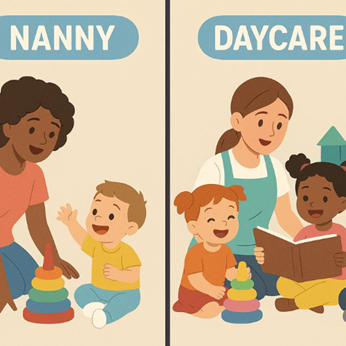Diet for a Weaning Baby
A very interesting discussion; a newborn recognizes faces, sounds and known smells and tastes, and the taste and smell of milk on birth. Your 4-month baby will recognize foods by taste and smell and learns to quickly accept new foods. By the age of 2, the baby gradually accepts a variety of foods that determines his/her food choices and preferences into adulthood.
Most newborns have a special preference for the sweet taste, with other tastes and textures learnt through experience; some infants develop a dislike for the bitter taste and certain food textures, which is the reason they unfortunately dislike vegetables that contribute to a health and varied diet. It is also significant to understand a pregnant woman’s diet during pregnancy determines certain taste preferences.
It is significant to understand that a newborn’s preference to certain strong tastes like garlic is learnt by the taste of the breast milk that is flavored by these tastes; this does not however apply to all foods eaten by the mother.
Babies between the ages of 4 to 6 months should be introduced to a wide range of tastes and introduced to foods like vegetables that have a strong taste; this enables easy acceptance of these foods throughout childhood. This time is also an ideal time to introduce your baby to pureed and mashed foods.
From 6 months onwards babies should be given lumpy solid foods mashed with soft lumps; infants at this stage develop tongue and mouth skills and are able to move food to the sides and then to the back of the mouth to be swallowed. Your infant may gag on the lumps at first before he/she learns to deal with the more solid textured foods. This is the most ideal time to introduce foods of a soft lumpy texture; a delay could lead to poor acceptance of a varied diet in later childhood.

Around the same time fruit juice that is rich in important vitamins and minerals like Vitamin C, potassium and foliates can be introduced in an infant’s diet; mix 1 part of 100% fruit juice with 10 parts of water, a small glass substituting for 1 out of 5 portions of fruit and vegetables a day. Introduce fruit juice with plant based meal with fortified cereals, some beans, lentils and spinach; Vitamin C in fruit juice helps better absorption of iron, so important healthy blood.
Some of the nutrient rich juices are citrus juices like grapefruit and orange. Orange juice offers excellent source of vitamin C that helps maintain a healthy immune system and healthy skin and gums, foliates that reduce tiredness and fatigue and potassium that is vital for normal muscle function, nervous system as well as helps to maintain a healthy blood pressure.
Introduce your baby to mash and harder lumpy solids around 8 months; most babies learn to chew without gagging by the age of 12 months. Your baby at 18 months begins to reject foods by their look and would be able to point out to foods they like and say “No” to foods they don’t like. He/she would reject a meal where a disliked food is touching or hidden with a liked food.

Around 20 months some toddlers may cultivate a fear for new foods, with the toddler rejecting new foods and foods previously accepted; this behavior could also be inherited, with this response gradually declining throughout childhood. Around 2 years a toddler develops food preferences that carry on throughout life; so it is best for parents to eat healthy in front of children. Toddlers not only easily imitate adult’s eating preferences, but also start imitating the eating behavior of children of their age at 3 years.
It is quite true that the weaning diet of a baby should include:
A varied range of foods should be given to widen the category of foods accepted by the infant.
Gradually and gently introduce new tastes to the infant with encouragement; small amounts can be offered on subsequent days with the food accepted by him/her.
The right age to start off on textures solid foods is six months.
Take the next step toward your goals
Share your requirement and find the best care providers in your area
-
Looking for a caretaker’s job? Build your profile and get in touch with families in your vicinity.
-
Discover nannies, babysitters, cooks, housekeepers, pet sitters, and elder care under one roof.
-
Get all the support you need to run a successful care center.
-
Search for appropriate centers near you depending on your needs.
Care Corner Insights: Blog Library

Nanny vs. Daycare in Naperville, IL: What Works Best for Indian Working Couples?
Hey Naperville Parents! Balancing work and family life is no small feat—especially for Indian working couples trying to juggle careers, household responsibilities, and parenting. One of the biggest decisions you’ll face? Choosing between a nanny or

Housekeepers in Sugar Land, TX: Deep-Cleaning Checklists for Indian Homes
Housekeepers in Sugar Land, TX: Deep-Cleaning Checklists for Indian Homes Indian cooking = flavor + spices + love… but also oil splatters and stubborn stains. Time to reset! Degrease stovetops, chimneys, and exhaust fans. Scrub countertops, tiles,

12 Easy After-School Snack Ideas for Kids Who Get Hungry Quickly
School’s out, and the hunger hits hard! If your little ones come home ravenous and ready to raid the kitchen, you’re not alone. After-school snack time is prime time for refueling, recharging, and maybe even sneaking in a little nutrition. So here ar

Vegetarian Home Cook Services in Sunnyvale, CA: North & South Indian Meal Prep for Busy NRIs
Between work, family, and daily responsibilities, finding time to cook fresh meals can be difficult. That’s when a vegetarian home cook service in Sunnyvale makes life easier—bringing authentic North and South Indian dishes straight to your table. T

Hiring a Live-In Nanny in Plano, TX: A Practical Guide for NRI Households
For NRI families living in Plano, TX, raising children while managing work and household responsibilities can feel overwhelming. Many parents find that hiring a live-in nanny provides the right balance of support, convenience, and cultural comfort. U

Daycares in Fremont, CA for Indian Toddlers: Curriculum, Food Policies & Waitlists
You’ve probably met them — the parents at the park chatting about Montessori vs. play-based learning while handing their toddler a homemade paratha. The ones who ask every daycare in Fremont if they serve vegetarian meals. And yes, the ones who have

Babysitters in Jersey City, NJ for NRI Parents: Last-Minute, Weekend & Evening Options
You’ve probably seen them — the parents juggling grocery bags in one hand and a phone call to grandma in India in the other, while trying to keep their toddler from running into the road. The ones who cancel dinner plans because the babysitter bailed

Best Nanny Services in Edison, NJ for Indian Families: Costs, Language, and Cultural Fit
Edison, NJ, is home to one of the largest Indian communities in the U.S., and finding a nanny here often means looking for more than just childcare skills. For Indian families, cultural understanding, language fluency, and traditional values play a b

What Is Helicopter Parenting? How It Affects Children and Ways to Avoid It
You’ve probably seen them. The parents at the playground who shadow every move, wiping invisible germs off the slide before their child touches it. The ones who fill out job applications for their teens. And yes, the ones who email college professors

Are Weighted Blankets Safe for Children? Pros and Cons Explained
Weighted blankets have become a cozy trend in recent years. From helping adults sleep better to calming anxiety, they’ve earned a spot in many households. But when it comes to kids, especially the little ones, parents often ask: Are weighted blankets